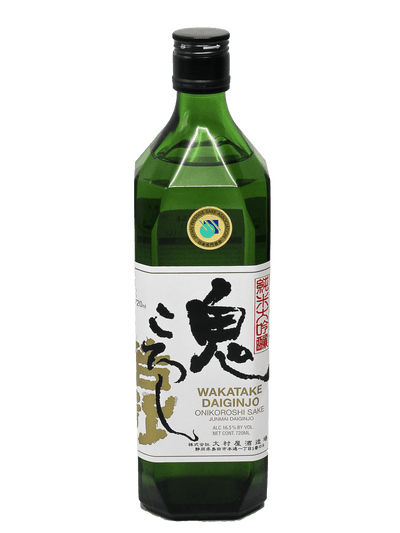Filtered versus Unfiltered Wine: Knowing The Difference

Something happening recently in wine production across the world is the increasing number of wines labelled as unfiltered. The winery may have chosen not to filter the way for a number of reasons: to promote something natural, authentic, back to the roots of wine, healthy. The idea of unfiltered wine fits well with the “natural wine” fashion of the past decade. There have been low-end and high-end “unfiltered” wines for decades, or course, but the appeal of wine that is loss processed and industrial has produced a trend. Not all unfiltered wine is “natural wine,” but you get the idea. Unfiltered beverages occur in the whisky category, too, like the Smoke Wagon Uncut Unfiltered Straight Bourbon Whiskey. The idea is that it comes straight from the cask, unadulterated, with no coloring, chill-filtering, or dilution of the whisky.
When you order wine delivery, the product you receive should have added flavor and aroma elements as well as better mouthfeel. That’s the winemaker’s goal.
Filtered and unfiltered wine: what is the difference?
Why is wine filtered in the first place?
When wine finishes fermenting, it is full of dead yeast cells, natural sediment, and sometime precipitated elements (and unprecipitated ones that could do so). It can be cloudy, especially before the wine has been racked. This wine is what some call “blind”; this blind, unclear wine is usually purified or filtered. That is, the suspended yeast particles and any sediment is separated from the wine before bottling. This is for aesthetic purposes and because an accidental gulp of sediment or crystals can be discomforting.
Decanting originated to separate the clear wine from the sediment often found in the bottom of wine bottles in the olden days. Some Port wines will always have sediment. Decanting is recommended for unfiltered red and some “orange” wines. Most will state they are unfiltered on the red wine bottle label.
While it’s true that “Big Wine,” industrial wine, is always filtered, so too are most wines, even from small producers. Many believe, however, that keeping a wine unfiltered can add to its age-ability, complexity, and intensity.
Filtration creates a clear, bright looking wine. The wine often goes through two filtrations: one to sift out the dead yeast cells to clarify the wine, and the second is to remove any bacteria before bottling so that there’s no in-bottle fermentation.
Which wines are almost always filtered?
When you order white wine online or red wine, there are categories that will almost surely have been filtered.
- Sweet white wines
- Dry white wines featuring fruity or floral aromas
- Large production wines of any color, i.e. Big Wine
- Wines made from botrytized grapes, like Sauternes
- Red wine where the winemaker did not want to purposefully create an unfiltered wine
Unfiltered wines
Unfiltered wine never goes through the mechanical filtration step; but this does not mean that the wine remains cloudy. Sediment is prone to gravity.
Instead of filtering out the yeast, the wine simply rests for a while, without shaking or moving the tanks. This naturally settles the yeast particles, sediment, and precipitates through gravity, which is what all wine was like before the advent of modern winemaking in the 20th century. After this point, the wine is extracted from the lees (the dead yeast cells) and other sediment. Racking is where we extract the clear wine from the cloudy wine at the bottom of the tank or barrel.
It results in a clarity similar to, but not completely, that of filtered wine.
Do the small particles left in unfiltered wines improve the taste?
For the most part, unfiltered wines have similar clarity to filtered wines, so some may question whether remaining particles contribute to the body, flavor, and aroma of the wine. As Wine Spectator has noted, “some winemakers believe that too much filtering and fining can strip a wine’s flavors and aromas, and unfiltered wines can have an appealing texture and mouthfeel.”
What wines are most commonly available unfiltered?
According to Wine Folly, this category includes:
- Red wines from small or boutique wineries
- White wines aged in oak barrels
- Wines with a complete malolactic conversion (also called malolactic fermentation, though it’s not really a fermentation)
- Dry red wines, particularly those made from Cabernet Sauvignon and similar grapes
Examples of unfiltered wine
The winemakers at Newton Vineyards in the Napa Valley made a specialty out of unfiltered wine, and you can conveniently order wine delivery. Newton highlights its eco-friendly practices, including in winery design. Its vineyards range in elevation from 500 to 1,600 feet above sea level. Our of 490 acres of prime Napa terroir, only about one fifth is planted to vines. “The non-farmed acreage remains in its native forested state providing natural habitat for indigenous wildlife,” says Newton.
Their 2018 Unfiltered Cabernet Sauvignon has structured yet refined palate. The lack of filtration may indeed add to density and volume on the midpalate, which complements the overall structure of this fine red wine, adding to its complexity and lending it an extended finish. James Suckling says it has layers of flavor, including fresh fruit and chocolate.
Newton Vineyard’s 2018 Unfiltered Chardonnay received rave reviews from critics. Does the lack of filtration contribute to its richly textured palate with racy acidity lingering “before finishing with a refreshing pithiness?” Probably so. In addition to no filtration, it was barrel fermented and then matured for one year in French oak, 25% of it new. Wine Enthusiast says it is “reductive and nutty in its opening note of oak and white flower. A creamy, lush midpalate of buttered corn and fig follow, with a splash of acidity providing balanced verve.” Sounds delicious!
Did you learn something new about the difference between filtered and unfiltered wine? Please leave a comment below and visit our other wine articles.

















Leave a comment